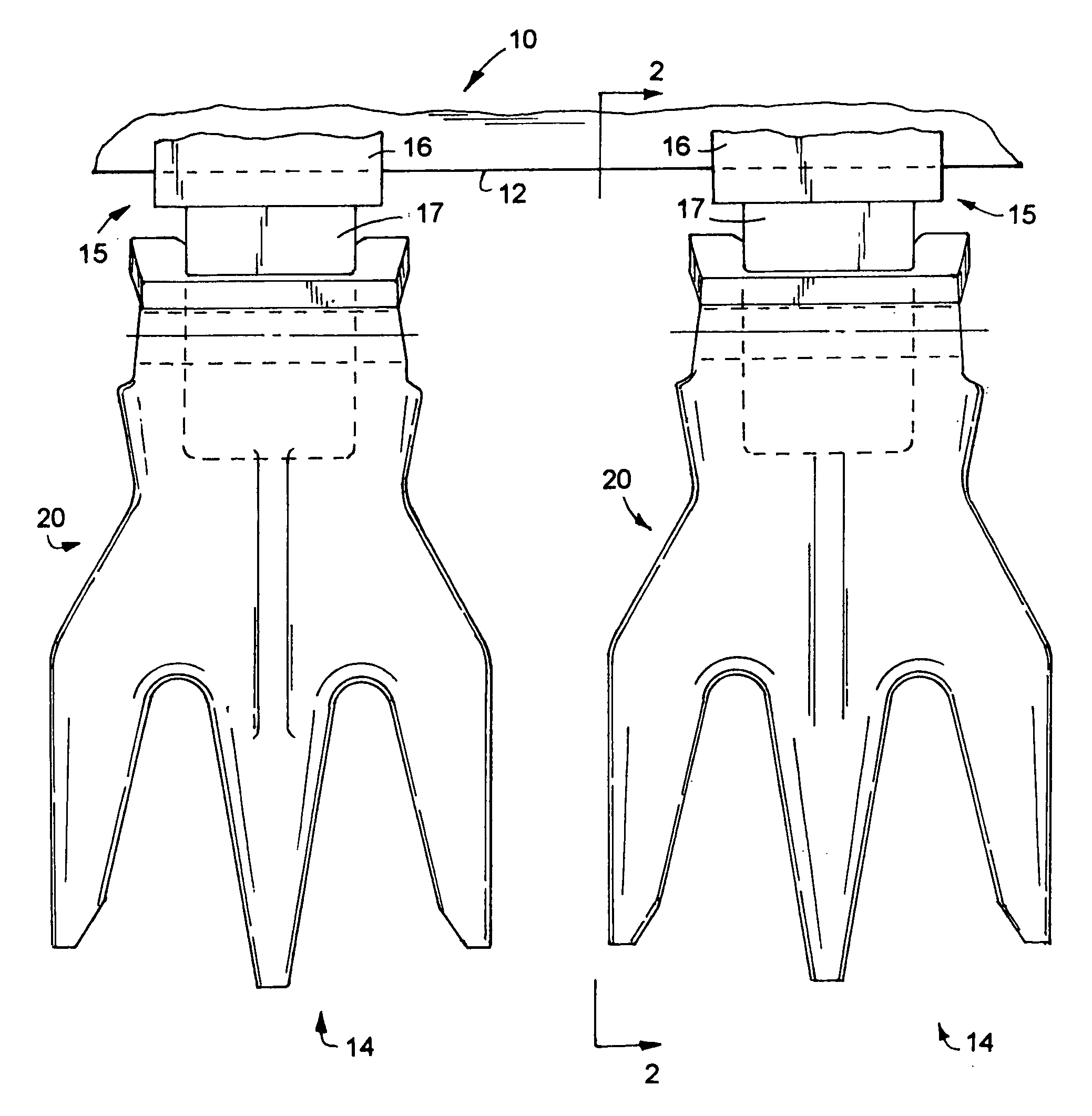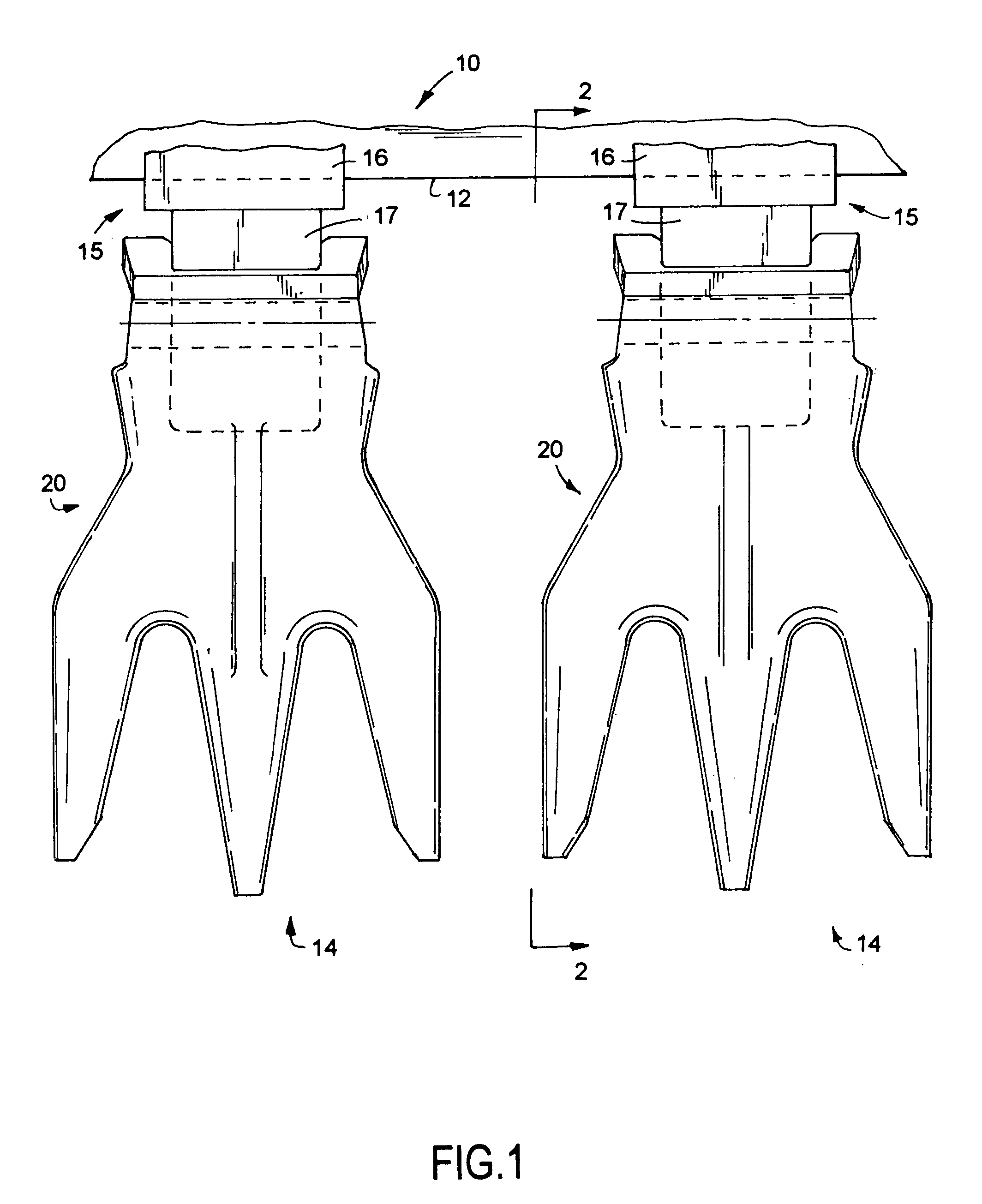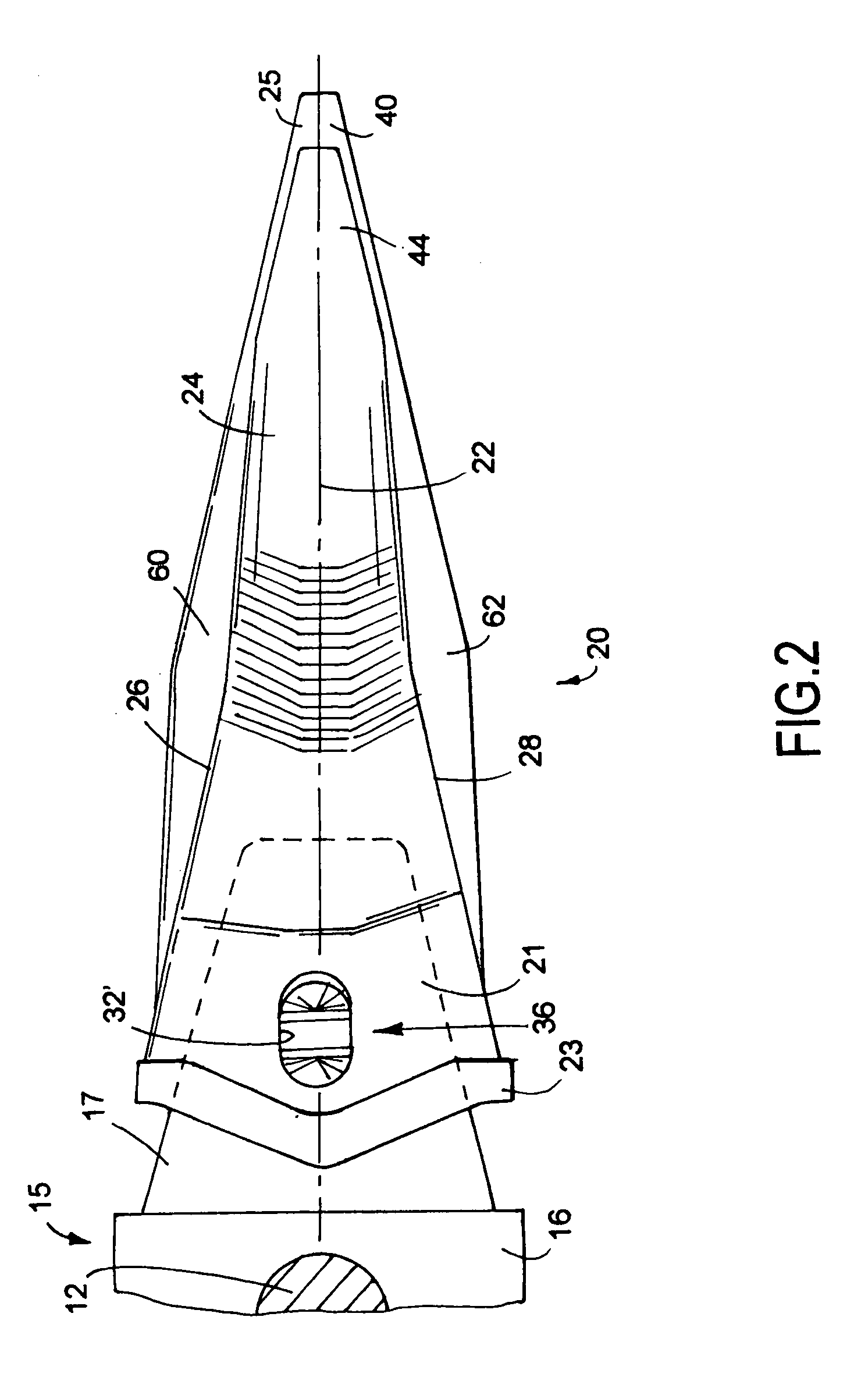Ground engaging digging tooth
a technology of digging tooth and tooth, which is applied in the direction of soil shifting machine/dredger, construction, etc., can solve the problems of rocky ground to be worked, unable to engage, and difficult digging, etc., and achieve the effect of adding strength and rigidity
- Summary
- Abstract
- Description
- Claims
- Application Information
AI Technical Summary
Benefits of technology
Problems solved by technology
Method used
Image
Examples
Embodiment Construction
[0030]While the present invention disclosure is susceptible of embodiment in multiple forms, there is shown in the drawings and will hereinafter be described a preferred embodiment of the invention disclosure, with the understanding the present disclosure is to be considered as setting forth an exemplification which is not intended to limit the invention disclosure to the specific embodiment illustrated and described.
[0031]Referring now to the drawings, wherein like reference numerals indicate like parts throughout the several views, there is shown in FIG. 1 a fragmentary plan view of a bucket for a backhoe, power shovel, or related ground working implement or equipment generally identified by reference numeral 10. Such ground working equipment 10 is typically provided with a transverse extending lip or leading edge 12 and has a plurality of multipiece digging tooth assemblies 14 arranged in laterally spaced relation relative to each other along and extending forward from such lip o...
PUM
 Login to View More
Login to View More Abstract
Description
Claims
Application Information
 Login to View More
Login to View More - R&D
- Intellectual Property
- Life Sciences
- Materials
- Tech Scout
- Unparalleled Data Quality
- Higher Quality Content
- 60% Fewer Hallucinations
Browse by: Latest US Patents, China's latest patents, Technical Efficacy Thesaurus, Application Domain, Technology Topic, Popular Technical Reports.
© 2025 PatSnap. All rights reserved.Legal|Privacy policy|Modern Slavery Act Transparency Statement|Sitemap|About US| Contact US: help@patsnap.com



